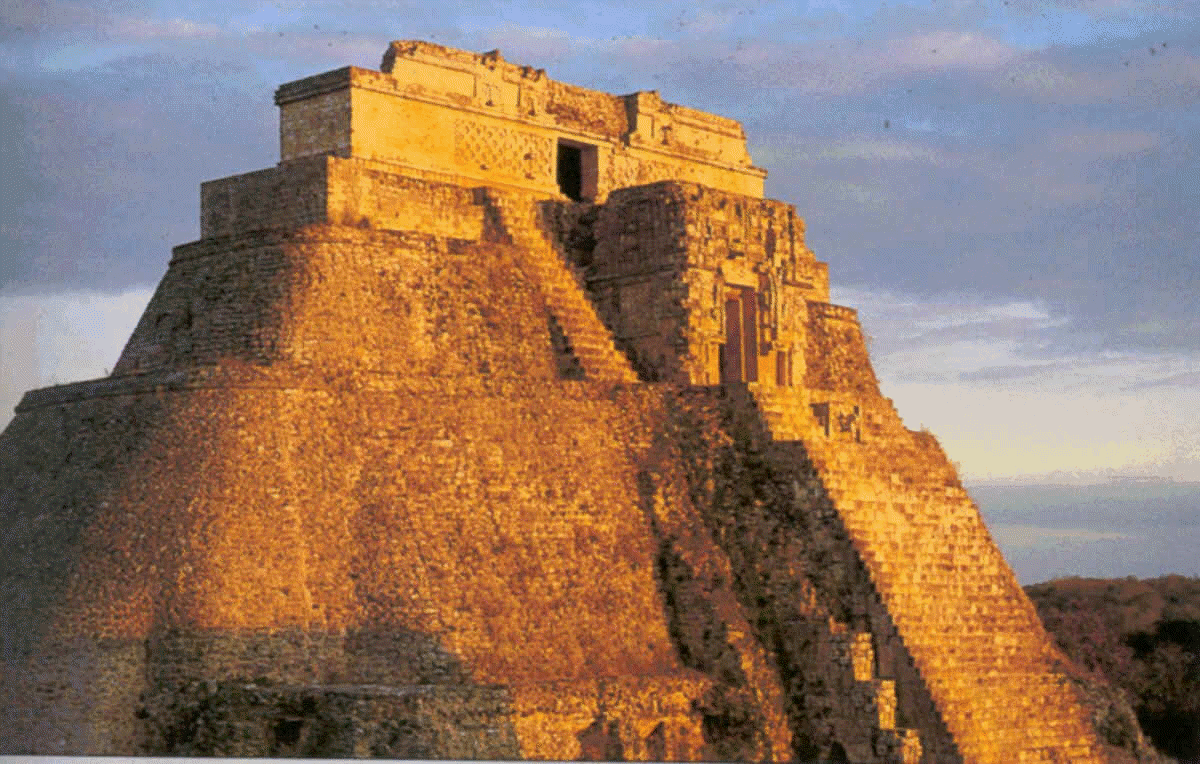Over 1,000 years ago, droughts plagued the Yucatan peninsula. The Yucatan was home to the Classic Lowland Maya Civilization, of pyramids and the number zero fame. Droughts occurred intermittently for centuries, from 200 to 1100 CE. This is an era of Mayan history typically split in two — the Classic (200-800 CE) and Terminal Classic (800-1100 CE) Periods. The droughts coincided with the widespread collapse of the Maya Civilization around 1100 CE.
The first scientific evidence of these droughts was discovered by Dr. David Hodell and other researchers at the University of Florida in 1995, using ancient sediments from Lake Chinchancanab. Since then, the droughts have been a popular example of how extreme climate fluctuations can impact society. However, the magnitude of the droughts has remained an elusive and difficult question to answer. Further, archaeological research has revealed a much more complex history of the Classic Maya reorganization than originally thought, suggesting the droughts were not the only factor destabilizing the Classic Maya. Archaeologists have found evidence that suggest the Maya Civilization experienced social changes including class conflicts, warfare, invasion, and ideological change. 20 years after the discovery of drought evidence in the Yucatan, researchers returned to Lake Chinchancanab to investigate a seemingly simple question: just how dry was it?
In the pioneering Yucatán drought research, Hoddell and his team sampled sediment cores from the bottom of Lake Chinchancanab that were thousands of years old. In the core, they found layers of gypsum, a white chalky mineral often used in plaster or cement. Because gypsum can only form in a lake setting when a large amount of evaporation has occurred, presence of gypsum in lake sediments is evidence of periods in the past where lake levels dropped significantly — signs of past drought events.
Interestingly, archaeological records show that these periods of droughts coincided with sociopolitical unrest in the region, including increased warfare and internal violence of the Lowland Maya. This sediment core from Lake Chinchancanab was the first quantitative link between climate and instability of the Classic Maya.
Hoddell is now based at the University of Cambridge, but he and his group are still interested in human-climate connections. In this new study, his team went back to Lake Chinchancanab. The researchers are still focusing on the lake’s gypsum, but now they are looking to the ancient lake water that has been trapped in the gypsum since the droughts. The researchers developed new chemistry and modeling techniques to assess how extreme the Classic and Terminal Classic droughts were. By measuring the chemistry of the trapped ancient lake water, they established ideas for what the chemistry and depth of the lake would have looked like during the droughts. With these constraints, the researchers developed a theoretical model of a lake. They tested different climate scenarios to see how the lake chemistry would respond, until the modeled lake chemistry matched the ancient water in the gypsum. It’s the scientific equivalent of turning light switches on and off until you figure out which one is the light you actually want.
The researchers ultimately found that rainfall decreased by 50 percent on average compared to today, and as much as 70 percent during the most intense drought conditions. Humidity decreased by two to seven percent. That decrease in rainfall is the equivalent of Seattle becoming as dry as Tucson. “We don’t really know what changes in relative humidity might be in that past, because we never really had a tool to constrain it before,” says Thomas Bauska, a co-author of the study and researcher at Cambridge University. ”[The results] do tell us that the Yucatan was experiencing dry season conditions during a much longer period of the year.”
These new results and techniques can open many doors. Much of paleoclimate research relies on qualitatively studying past climate records rather than measuring past climate. It’s useful, but this approach prevents us from asking questions precise quantitative data can raise. It’s the difference between saying “wow, it was really dry in 1100 CE” and saying “there was a 50-70 percent decrease in rainfall compared to today.”
For example, we can learn a lot from the ancient Maya about human resilience and adaptation to climatic extremes. Previous studies in this region showed that during the first Classic Period droughts, the Maya adapted their agricultural practices by rotating their crops to maize (corn) varieties that required less water, but were unsuccessful at adapting in later droughts. But these results were based on qualitative paleoclimate records; hopefully providing more exact estimates of drought intensity will lead to a better understanding of how the Classic Maya reacted in the face of extreme climatic change.
This civilization flourished in the not too distant past: the demise of the Classic Maya occurred around 900–1200 CE (though this collapse doesn’t mean the Maya disappeared — the remaining population reorganized and formed new communities). Cambridge University, where this research was done, was founded in 1209 CE. But there’s still so much that scientists don’t know about Mayan history. More concretely understanding the past climate changes of this region is one monumental step toward understanding how the Maya interacted with their environment


Shares